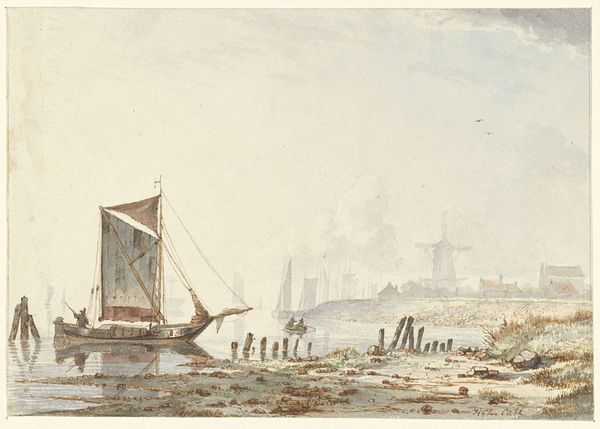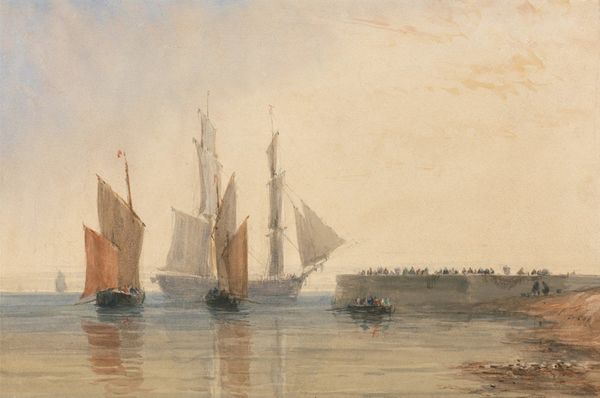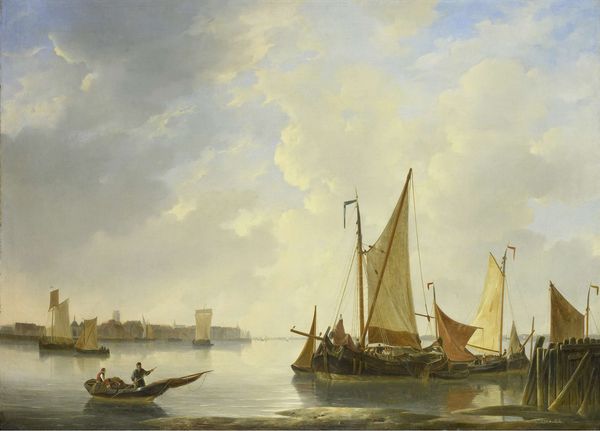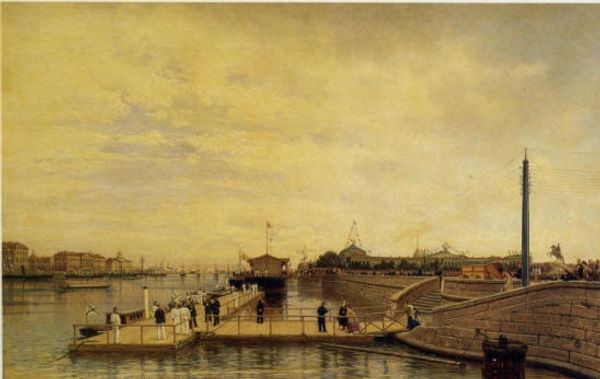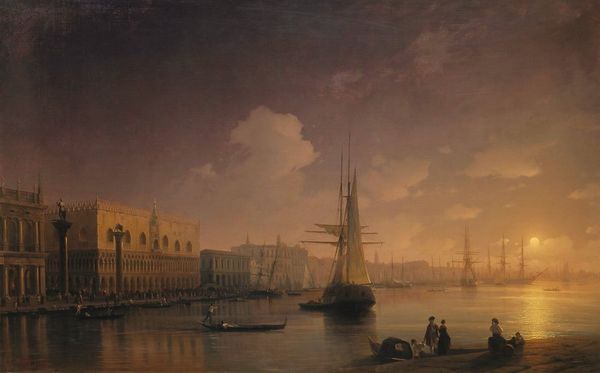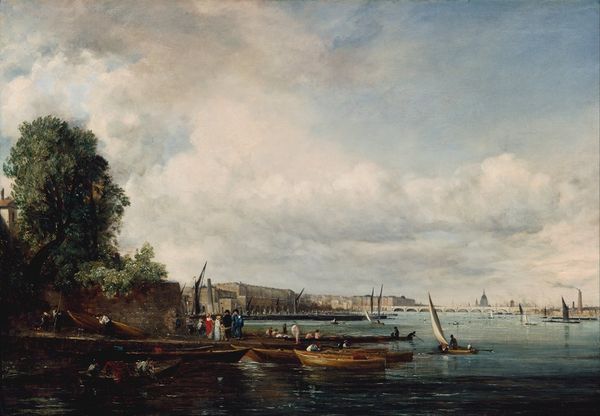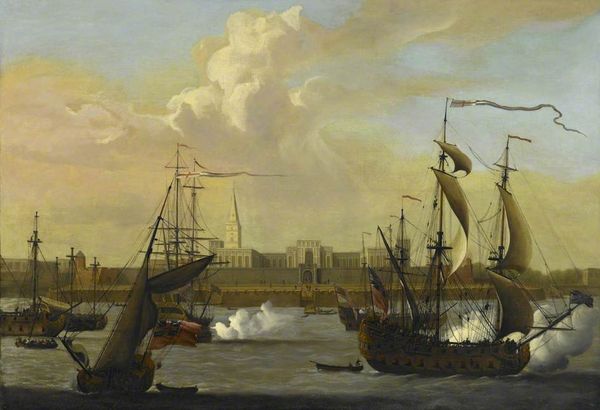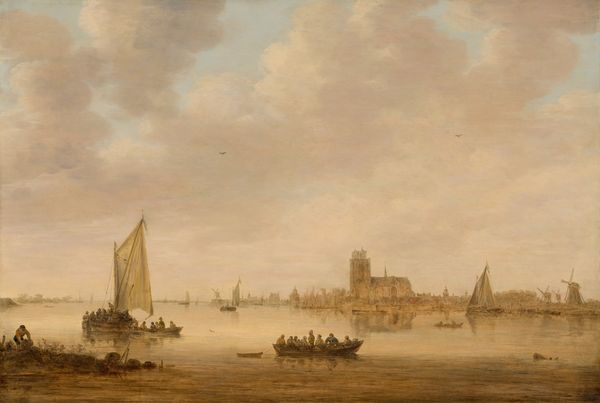
Copyright: Public domain
Editor: Here we have John Wilson Carmichael’s watercolor, "The building of the SS 'Great Eastern'," from 1857. The hazy light really gives it a sense of scale, almost dwarfing the smaller boats. What stands out to you? Curator: Well, beyond the impressive scale, consider the historical moment it captures. The SS 'Great Eastern' wasn’t just a ship; it was a symbol of Victorian ambition and technological progress. Carmichael isn't just painting a landscape; he's presenting the grand public spectacle of industrial advancement. Do you notice how the workers on the ship's hull are rendered so small? Editor: Yes, they're almost indistinct. It makes the ship seem even more enormous and imposing. Curator: Exactly! And this plays into the narrative of the era. The individual is minimized against the backdrop of industrial might. Think about how paintings of battles celebrated military power. This image, in its own way, celebrates engineering and industrial power, playing a similar public role. How do you think its initial audience reacted to such a painting? Editor: They probably felt a mix of awe and perhaps a little intimidated? Like, "Wow, look what we can build," but also a sense of being part of something much larger than themselves. Curator: Precisely. The painting participates in shaping that public sentiment, normalizing this view of progress. Editor: I hadn't thought about it that way, as actively shaping public opinion! So, it’s not just a pretty picture of a ship; it’s part of the whole political and social environment. Curator: Absolutely. And it demonstrates how even landscape paintings can participate in the politics of imagery. Editor: That's given me a whole new perspective on what to look for in artworks. Thank you!
Comments
No comments
Be the first to comment and join the conversation on the ultimate creative platform.
